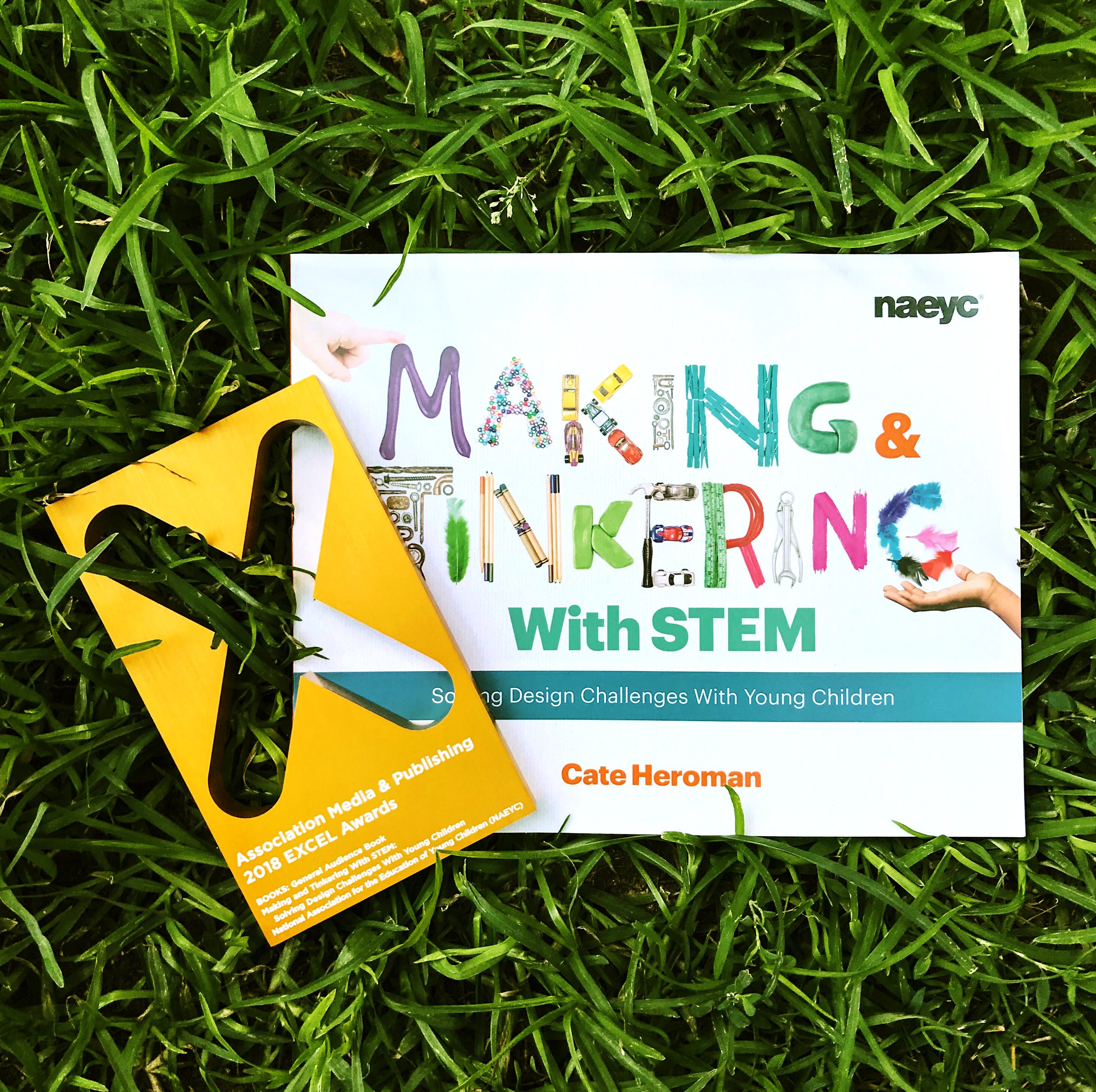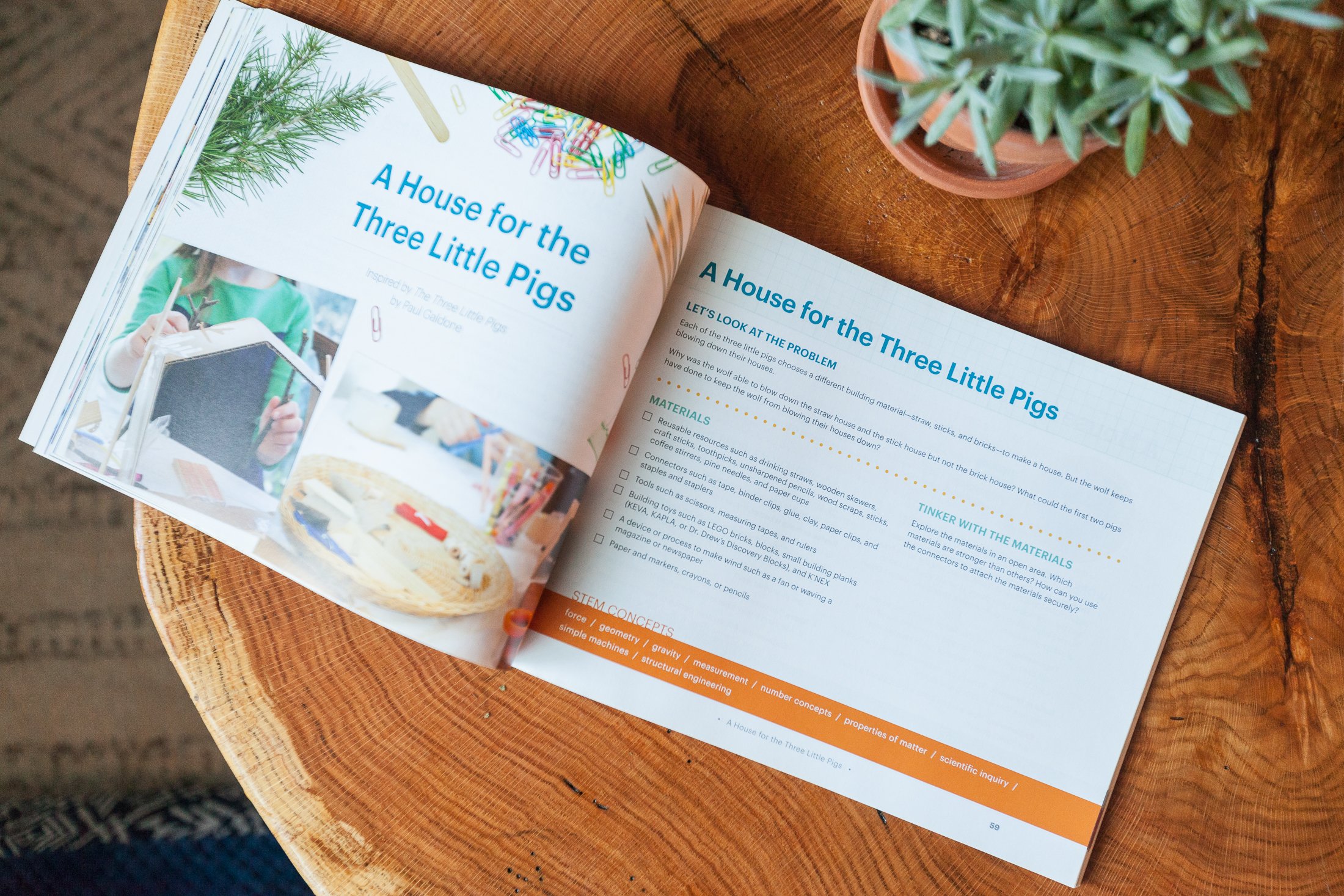
Making and Tinkering with Stem
Case Study
Book Design and Layout | Book Production | Photography
Background
Making and Tinkering with Stem: Solving Design Challenges With Young Children is a book written by Cate Heroman, geared towards educators working with children ages 3-8. The book features
25 engineering design challenges
Suggestions for educators to expand on makerspace ideas
A list of 100 picture books that encourage STEM exploration
Questions and ideas for expanding children’s understanding of STEM
A planning template for educators to create their own design challenges
I served as the Lead Designer, and Photographer.






Planning the Cover
For the cover, I wanted to capture the essence of the interior design and purpose of the book—making and tinkering. I gathered a bunch of art materials from my home and took overhead photos with my very basic camera at the time. I did not have access to adequate and consistent lighting, so this was a great opportunity to flex my Photoshop skills for the final design.
I cropped, color corrected, and removed the background from each photo combination I created. I went through several layout options and decided to also incorporate a few stock images as I didn’t have enough variety of items to depict the subject matter well. I decided to add stock photos of materials including hardware, modeling clay, and a jelly-like substance. Then, I edited all photos together to maintain a consistent look between the objects.
Once the objects were complete, I added in the remaining graphic details, such as the logo, subtitle, and children’s hands. Most of the objects I photographed were shot on a white canvas texture. I decided to leave this texture in the final design of the book as a nice, minimal detail that gave the background a hint of depth.
Planning the Interior
The interior was particularly difficult to design as there were so many sections with spacial limitations. The introduction and appendix, which included charts and a planning template, were flexible in the number of pages allotted. However, each engineering challenge had to be contained within two spreads. On those spreads, each section had to maintain a maximum line length that was consistent throughout all 25 challenges. I identified the longest sections first to base my design on.
The first spread must include images submitted by the author (I also included overhead photos of materials used in the challenge for visual effect), the name of the challenge, the name of the children’s book that inspired the challenge, the problem that needed to be solved, the list of materials, a list of questions and suggestions for how to solve the problem, and the STEM concepts explored within the challenge.
The second spread had to include the challenge’s instructions, a list of questions and comments the educator might ask the student, a list of ways to explore the challenge in a more extensive manner, and a list of additional children’s books that are related to the challenge.
Additionally, I wanted the design to reflect the makerspace nature of the book so elements like graph paper and singular tinkering items were scattered throughout the book.


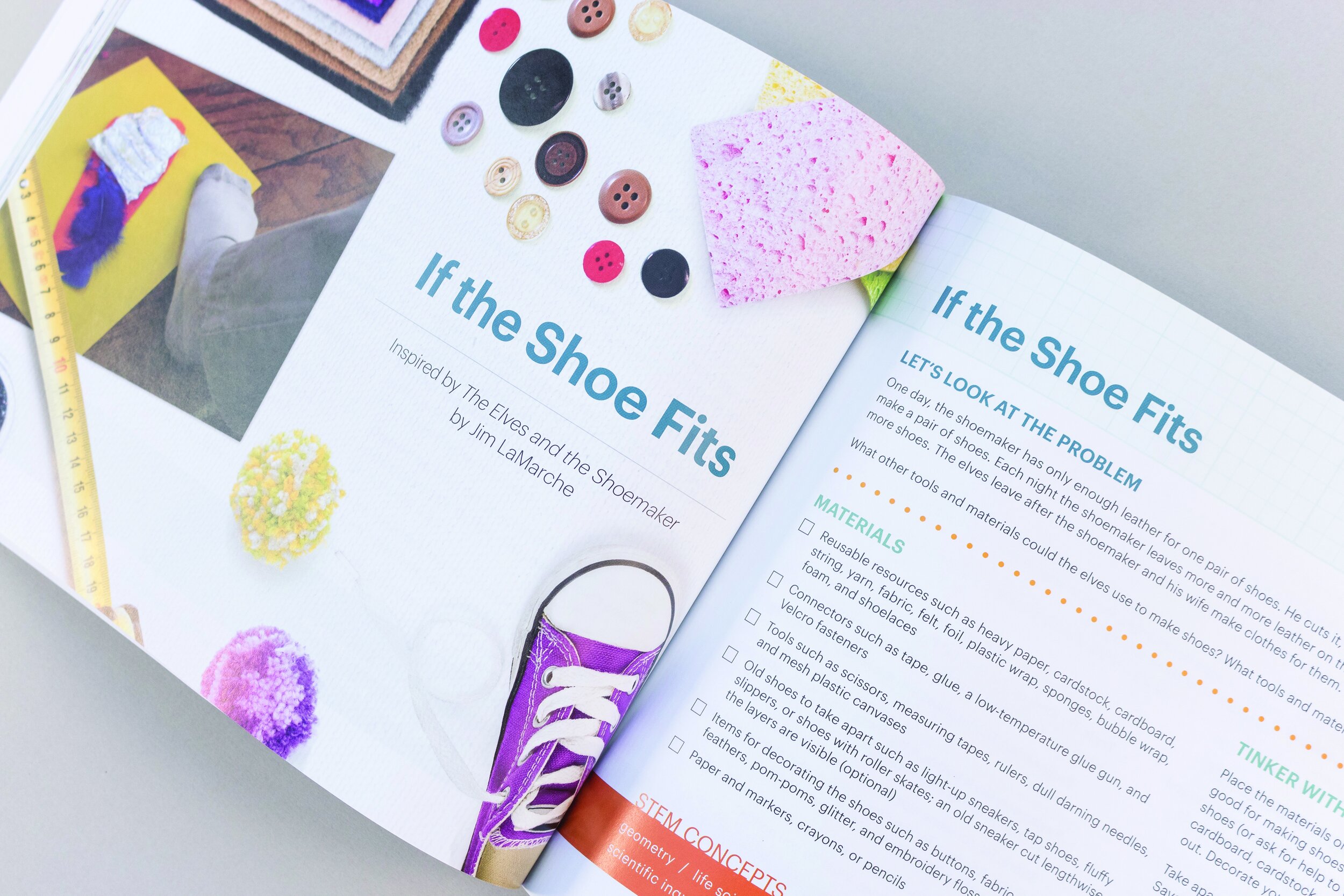
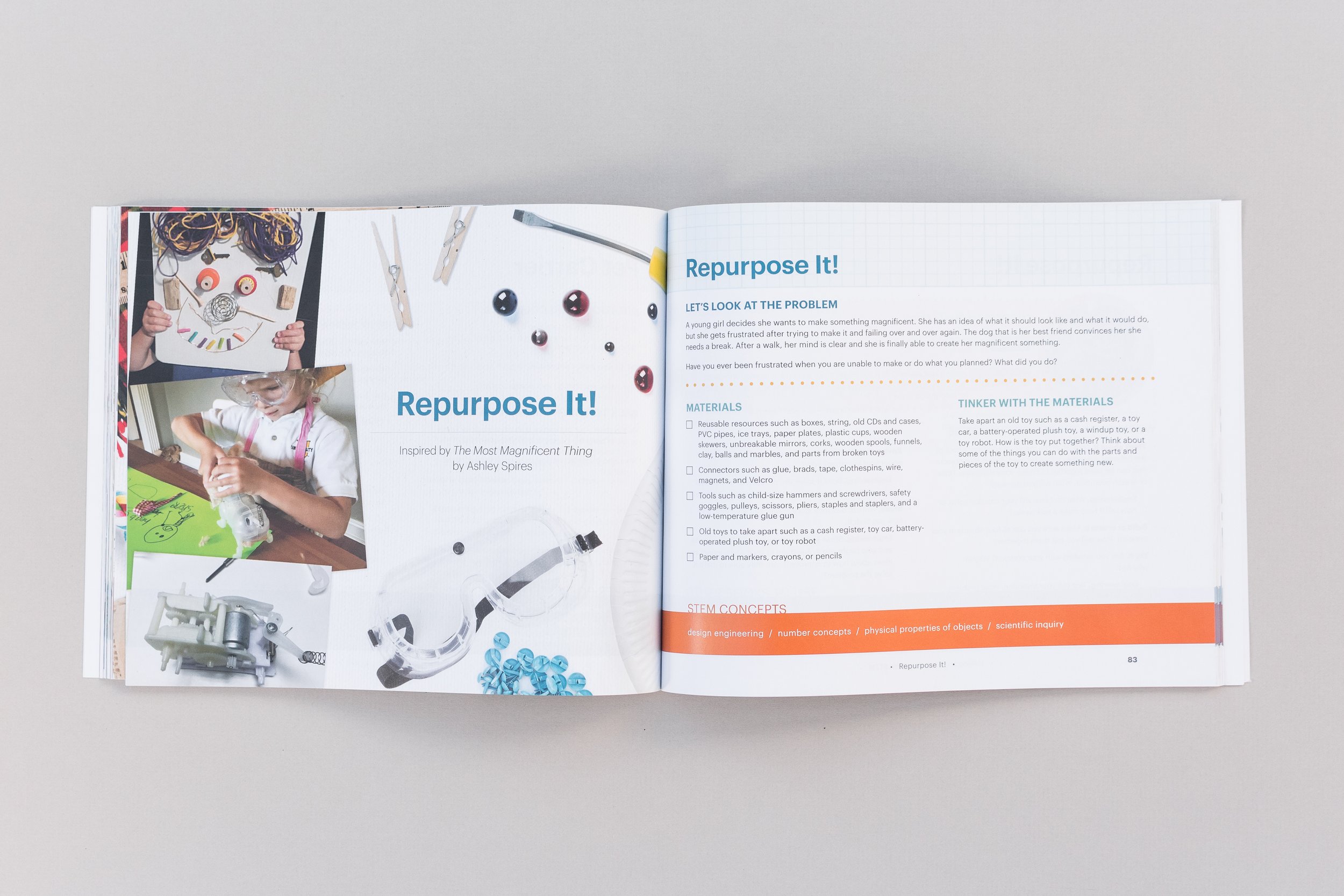




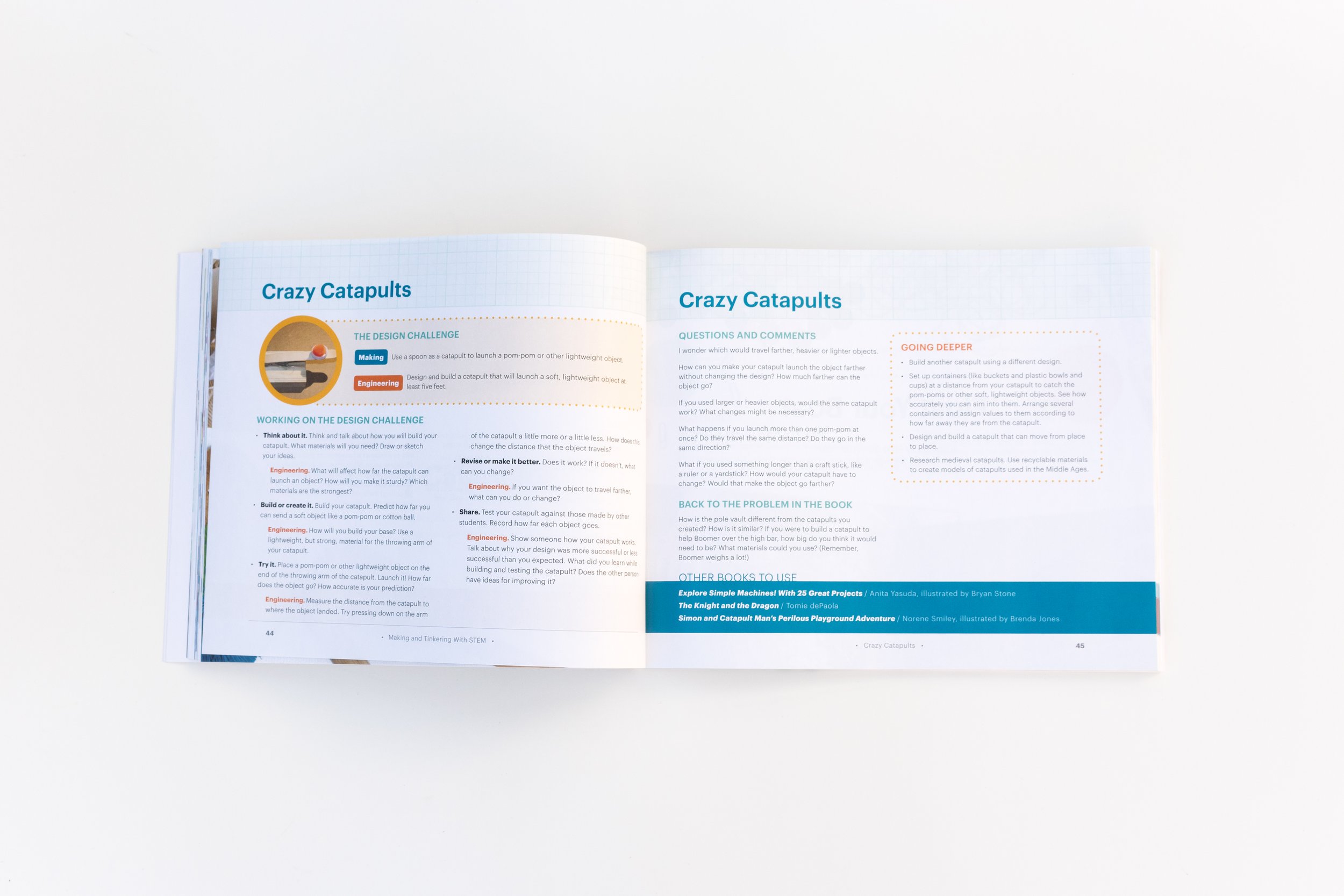
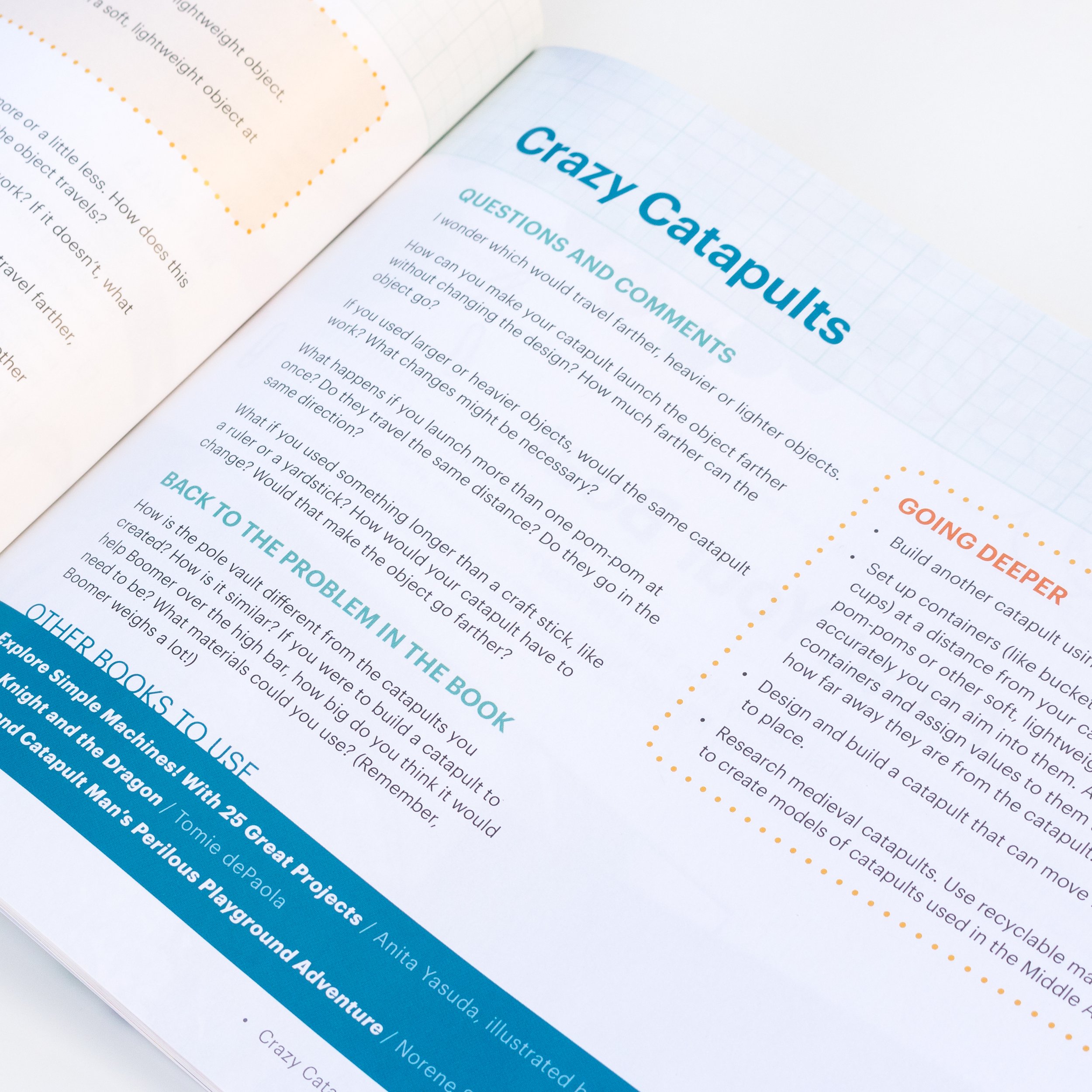


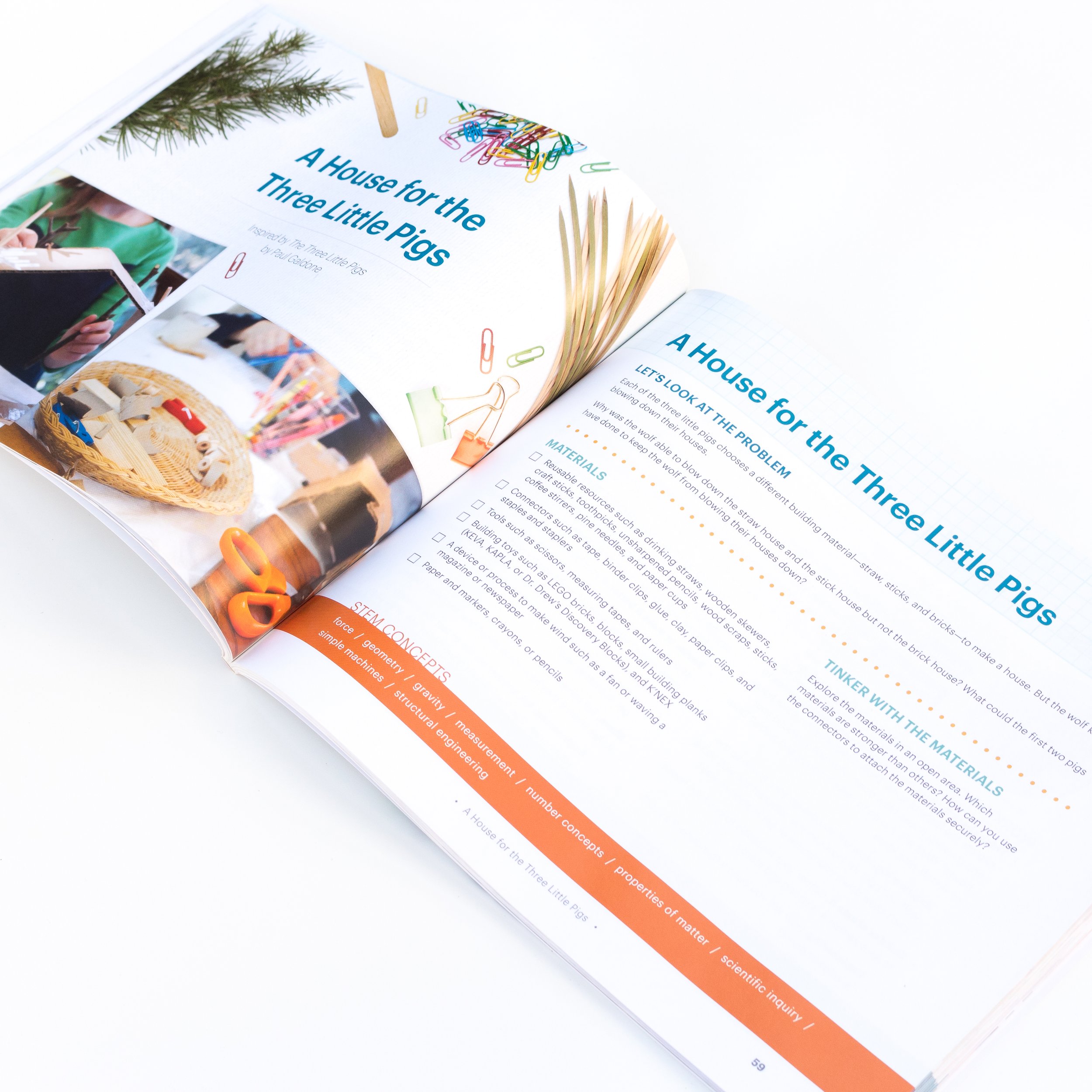


Marketing Poster
I also created a marketing poster that was mailed to educators across the country.
The front of the poster was an adaption of the book content and meant for educators to hang up in their classrooms as inspiration and guidelines to support making and tinkering with their students.
The back of the poster promoted NAEYC membership and upcoming professional development opportunities or educators.
Event Photography
In 2018, I photographed a 90-minute workshop supporting the book, which was held by the author, Cate Heroman. I captured moments of early childhood educators learning and working together, as well as their creative tinkering designs.


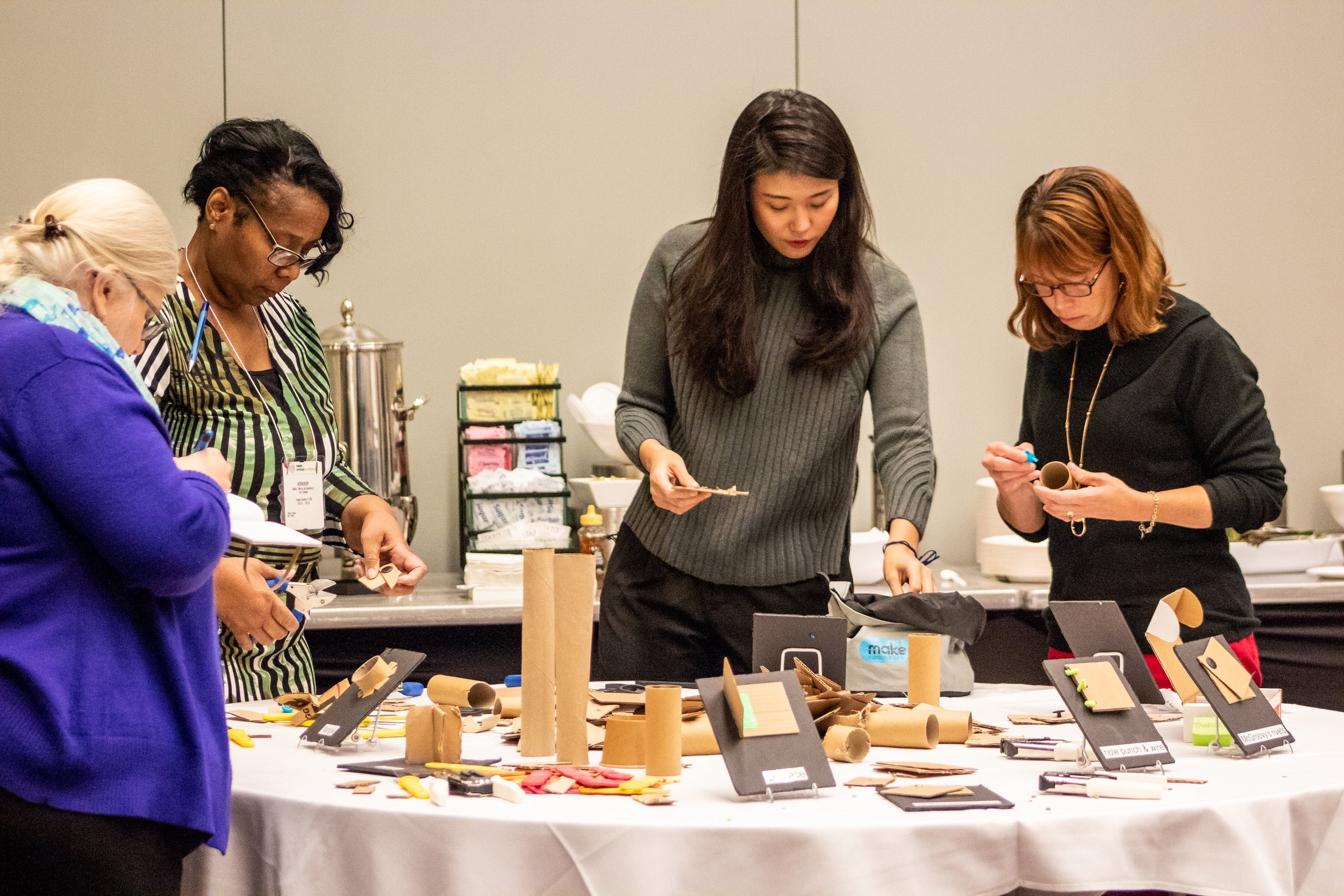






This book has become one of the top selling NAEYC books to date. It also won the Gold award for General Audience Book in the 2018 SIAA AM&P Network EXCEL Awards.


